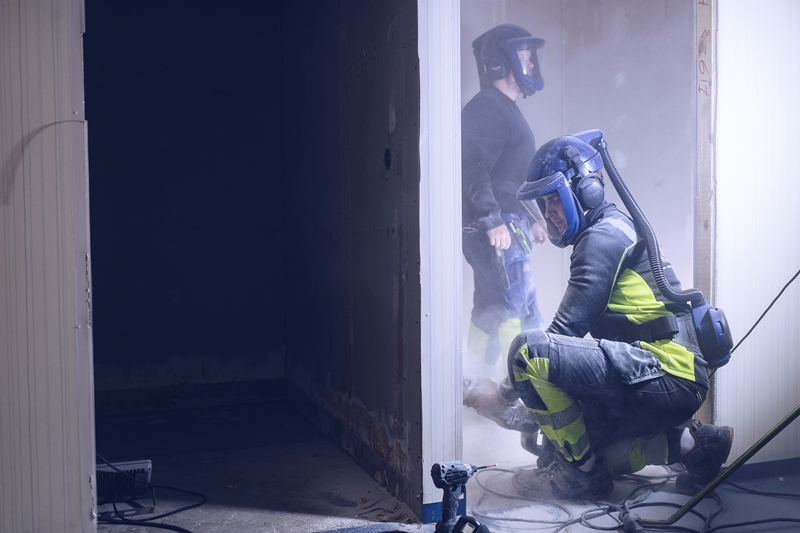Construction dust

Regular inhalation, of even small quantities of construction dust, can damage the lungs and respiratory airways over the course of time. Some diseases can develop quite quickly, but in many cases, it can take 10 to 30 years before symptoms become apparent.
What is construction dust?
Construction dust is a broad term, there are many different types of dust one may be exposed to in a construction environment.
Silica dust arises during work with materials containing silica, such as concrete, mortar and sandstone.
Wood dust arises during work with softwood, hardwood and wood-based materials such as MDF and plywood.
Other types of dust arise during work with plaster, glass wool, mineral wool, marble, etc.

Health risks:
Lung damage such as silicosis, lung cancer, asthma, or chronic obstructive pulmonary disease (COPD), and includes diseases such as chronic bronchitis and emphysema.

Respiratory protection
When all other measures have been taken to reduce dangerous exposure levels, respiratory protection equipment is the last means of preventing hazardous air contamination entering the body, via the airways.
Facial hair, such as beards, moustaches, and sideburns, reduce effective seals on tight-fitting respirators, and create a need for Powered Air Respiratory Protection to ensure adequate levels of contaminant reduction.
For expert support for your respiratory needs, contact Sundstrom ukhelpdesk@srsafety.com or 0330 808 8935


